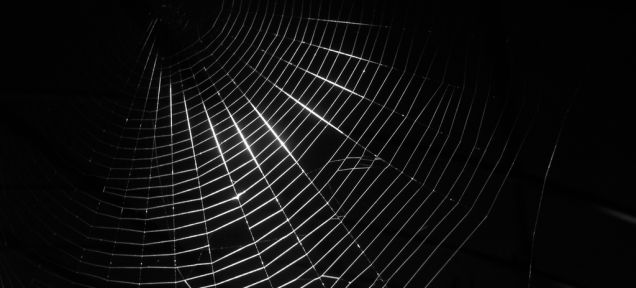Spider silk is often touted as a wonder material that will soon weave its way into everything from body armour to replacement hearts. But we can only squeeze so much of the stuff out of our eight-legged friends, which is why scientists and entrepreneurs are working hard to reproduce it artificially.
Now, an MIT-led research team has apparently made a breakthrough. As reported this week in Nature Communications, scientists have successfully spun small amounts of artificial silk in the lab, by mixing the component proteins and extruding them through a syringe. This work may pave the way toward the creation of new materials that have even better properties than old-fashioned spider silk — for instance, ultra-strong carbon nanotubes-infused fibres — to serve a wide range of technological purposes.
Spider silk has an especially promising future in medicine. The stuff is bio-compatible, meaning it can be used in the human body without adverse reactions. It’s a wondrous clotting agent, and as a scaffold to grow artificial tissues on, few other materials hold a candle. But for obvious reasons, farming spiders to produce silk en masse is a tad horrifying impractical. Hence, the need for more efficient methods.
As described in their paper, the researchers first used genetically modified bacteria to produce the building blocks of spider silk — a smorgasbord of water-loving and water-repellent proteins. To “spin” their silk, the researchers mixed these proteins in water, and slowly ejected the solution through a tiny syringe. This method, it turns out, causes the proteins to self-assemble into very spider-like fibres.
This lab-grown silk isn’t yet quite as strong as the spider-spun variety, but now that a basic technique has been established, it should be possible to refine the recipe and improve the silk’s strength. Spiders, of course, have spent millions of evolutionary years fine-tuning their silk to be the perfect web-building material. But as humans co-opt the stuff to serve a range of different purposes, we might decide to tweak nature’s creation. Surgical sutures, for instance, would probably need more strength and less elasticity than natural spider silk offers.
“Our goal is to improve the strength, elasticity, and toughness of artificially spun fibres by borrowing bright ideas from nature,” study co-author Shangchao Lin said in a press release. “This study could inspire the development of new synthetic fibres — or any materials requiring enhanced properties, such as in electrical and thermal transport, in a certain direction.”
Read the full scientific paper at Nature Communications.
Top image: The AutoMotovated Cyclist
